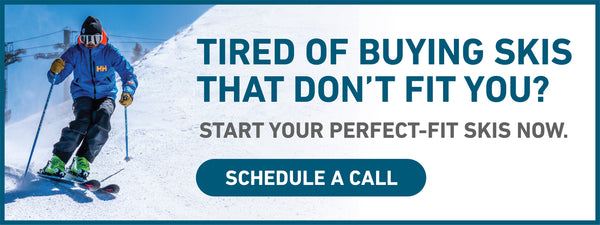--

Your Best Move for a Better Ski Season
One Word: Squats. (Sorry.)
A surefire way to set yourself up for better performance and endurance this ski season is by focusing on your squats. During Chris Fellows’s 30 years as a ski instructor and fitness trainer in Lake Tahoe, Calif., he has seen many skiers struggle to advance due to limited movement and asymmetrical strength and balance. On the other hand, skiers who are more naturally aligned and proportionality balanced, always progress faster. In his expert opinion, it comes down to squats.
As Fellows said, very few skiers have faultless technique; nearly everyone on the mountain is compensating for something. However, the more efficient your body mechanics are, the more seamless your improvement will be. You can improve your ski technique by addressing these fitness issues in the gym, before your first day on snow.
Body-Weight Single-Leg Squat
Try this single-leg squat exercise to see your basic asymmetries from left to right. During the exercise, look for disparities between your left and right sides. A muscle imbalance or stiff joint could affect your dynamic skiing balance as you transition between turns, adjust for tough terrain, and absorb variable snow conditions. An imbalance could eventually lead to injury and time off the snow.
Here’s how to perform the body-weight single-leg squat:
- Stand with your feet hip-width apart and center your weight over one leg.
- Balance on that leg with no weight on the other leg, and then slowly lower yourself into a squatting position, bringing your thigh parallel to the floor.
- Move back up to a standing position and repeat the movement three times on each side.
If you notice that you are making heel-lifting compensations, place a 2-inch block under your heel and repeat the movement. This will keep activation in the gluteal muscle and avoid stress in the patella tendon of the bent knee.
This basic body-weight single-leg squat could uncover clues on what your “Achilles heel” might be when it comes to advancing in skiing. If your leg wobbles and feels unstable, you may be in need of strength training. If your upper body begins to list forward as you go low in the squat, then you may need to incorporate stretching into your routine to alleviate tightness in your hips.
This exercise should serve as a test and preparation before the weighted squat.
Full-Weight Squat
Once you can maintain symmetrical balance during the single leg squat with both legs, then move into the full-weight squat for the strength-building phase.
Weighted squats are the best for skiers because they build power in the quads, hamstrings, and glutes. A good squat involves a functionally tense core that stabilizes and allows for mobility in the extremities. Squats also increase your range of motion and develop the full-spectrum movements dynamic that sports like skiing demand.
To perform a weighted squat:
- Use a free-weight squat rack and stack on plates that equal 10-60% of your body weight.
- Place the bar across your upper back or across your chest with your feet shoulder-width apart.
- Lower to a squat until your thighs are parallel with the floor.
- As you flex, lower yourself with your hips, legs, and glutes, rather than with your back.
- Return upward to standing without locking your legs.
- Also, take care not to bend over at the waist or arch your back. If you find you cannot perform a perfect squat, lower the amount of weight you are using.
In skiing, think of the quads, hamstrings and glutes as the primary movers, and the core as the stabilizer and power source for this active muscle group. If you are weak, unstable, or immobile during the squat, there is a good chance you will compensate with your body and stress the weakest link in the chain. A weak link in your squat technique will reemerge on the hill as you push yourself to improve.
Quality movements in the gym will set you up for effective technique and longevity on the slopes. Increased quad strength you will give you endurance on those long, sustained runs through variable snow conditions and challenging terrain. When you are fit, the enjoyment factor in expert terrain always goes up.
Need more training tips and motivation before the season starts? Check out these articles:
- Prepare Your Body for Ski Season
- Stay Fit for Ski Season
Chris Fellows and his wife, Jenny, are co-directors of the North American Ski Training Center (NASTC). Based in Tahoe, Calif., NASTC offers world-class ski adventures around the planet. See more at www.skinastc.com.









